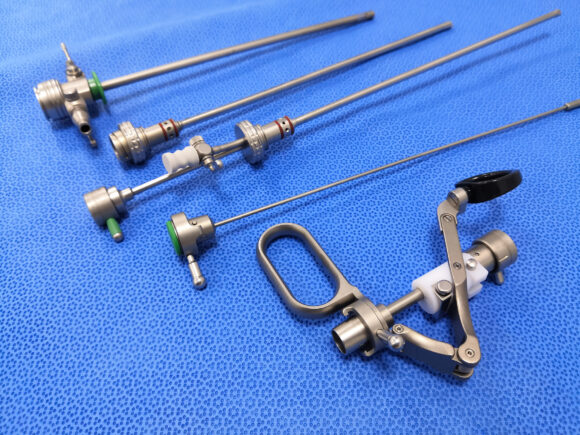A medical provider defending against a malpractice lawsuit cannot introduce evidence about assumption of risk if the patient acknowledges that she gave her informed consent, the Nevada Supreme Court ruled Thursday.
“Informed consent evidence is inadmissible, and an assumption-of-the-risk defense is improper, in professional negligence suits when the plaintiff does not challenge consent, as it serves only to confuse and mislead the jury,” the court’s 3-0 decision says.
The high court ordered a new trial for the plaintiff, a woman whose uterine wall and small intestine were pierced during minor surgery. It found that the Clark County trial court made four significant errors while presiding over a jury trial in a professional negligence action filed by Kimberly D. Taylor.
In addition to the informed consent issue, the court said the trial court also erred by:
- Barring testimony from the plaintiff regarding the reasonableness of medical bills for treatment to repair the injury.
- Allowing the defense to introduce evidence about insurance “write-downs” of medical bills.
- Prohibiting the plaintiff’s attorney from urging the jury during closing arguments to “send a message” to the defendant.
Taylor filed a malpractice lawsuit against Dr. Keith Grill and Women’s Health Associates of Southern Nevada while undergoing a hysteroscopy, which is usually a routine procedure in which a flexible tube is inserted through the vagina to take a tissue sample or remove polyps or fibroid tumors.
Taylor alleges Brill continued the surgery after observing the perforation of the uterine wall, failed to evaluate or diagnose the perforation of her intestine, failed to inform the post-anesthesia care unit of the perforation and didn’t apprise her of the injury either.
Before trial, the district court — over Taylor’s objections — allowed the defense to introduce evidence about Taylor’s knowledge of the risks and complications associated with the procedure. A jury unanimously found in favor of Brill and denied all of Taylor’s claims. Taylor appealed.
The court said in its opinion that it has never before considered whether evidence of informed consent is relevant in a professional negligence action. Generally, the evidence presented in malpractice cases involve deviation from the standard of care and medical causation, the court said. Those topics relate directly to the two elements a plaintiff must prove; that the medical provider deviated from the standard of care and those actions caused damages.
An assumption-of-the-risk defense, on the other hand, requires proof that the plaintiff voluntarily exposed herself to danger and had actual knowledge of the risk being assumed.
“We conclude that such evidence and argument is irrelevant to demonstrating that a medical provider conformed to the accepted standard of care or to refute medical causation when defending against a medical malpractice claim,” the opinion says.
Taylor’s lawsuit sought to recoup the amounts she spent on medical care to repair her uterine wall and intestine after the procedure, called “special damages.” The trial court, however, refused to allow her to admit evidence because she had not proffered a medical expert to testify that the charges were reasonable and necessary.
The Supreme Court said that was error. The trial court relied on a decision where testimony from a treating physician was admitted and deemed to be substantial evidence, according the opinion. The court said the ruling should not have been interpreted to mean that only medical experts can testify about the reasonableness of medical bills.
Taylor, herself, worked in the medical billing industry and she had also had called a chief financial officer for a hospital and a health care customer service billing manager to testify. The opinion says the information was relevant and admissible.
While the trial court excluded the vast majority of medical billing evidence that related to Taylor’s claim, it admitted the evidence of “insurance write-downs” that was offered by the defense. The Supreme Court said that, too, was a mistake.
Finally, Taylor argued that the district court had improperly limited her closing arguments by barring her lawyer to tell the jury that it should “send a message” with its verdict.
The Supreme Court agreed with her on that point, as well, The opinion says such a statement would be improper if the attorney were advising the jury to disregard evidence. Taylor’s attorney, however, was asking the jury to send a message after considering the evidence presented at trial, the opinion says.
The court reversed the district court’s judgment and directed it to hold a new trial.
Because the decision was made by a panel of three justices, the full court may reconsider a case if two members of the panel makes a request.
The state Legislature in 1997 authorized the Supreme Court to hear and decide cases in panels of three justices. The full Court must consider any case in which two members of a panel make such a request.
Top photo: Hysteroscopy surgical instruments are shown.
Was this article valuable?
Here are more articles you may enjoy.


 Cyber Breach Affected 750,000 Canadian Investors, Regulator Says
Cyber Breach Affected 750,000 Canadian Investors, Regulator Says  First Brands Judge Approves Examiner to Probe Fraud Allegations
First Brands Judge Approves Examiner to Probe Fraud Allegations  The Return Period for An LA Wildfire-Scale Event May Be Shorter Than You Think
The Return Period for An LA Wildfire-Scale Event May Be Shorter Than You Think  JPMorgan Wins Gender Pay Gap Dispute Against London Analyst
JPMorgan Wins Gender Pay Gap Dispute Against London Analyst 